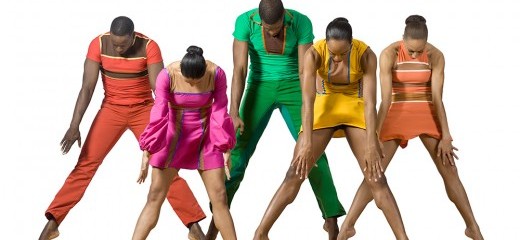
Joan Myers Brown on 50 Years with PHILADANCO and Philly’s Future
by Kat J. Sullivan
Amidst a global pandemic and international uprisings demanding racial justice, PHILADANCO is celebrating its 50th anniversary. The company name, a portmanteau for “Philadelphia Dance Company,” holds a deeply rooted place in the dance fabric of Philly; at its core stands founder and artistic director Joan Myers Brown. WHYY recently produced a documentary about the company and Brown as part of their Movers & Makers series. There, she discusses her experiences as a Black ballerina breaking into a largely white dance field and the forming of many critical organizations, including PHILADANCO, the Philadelphia School of Dance Arts, and the International Association of Blacks in Dance (IABD). I recently had the pleasure of corresponding with Brown and hearing her thoughts on moments past, present, and future.
Kat J. Sullivan: You have created so many important works, institutions, and opportunities for the dance community. What do you consider to be the greatest contribution of your career so far?
Joan Myers Brown: Forming the International Association of Blacks in Dance, now 32 years old. It was started as a conference in 1988, and then became an association in 1991. The first conference and subsequent ones were not all Black: brown, Latino, Asian, white, and others were all there, each time.
At the 2016 conference in Denver, Colorado, we had 101 Black girls register for an audition for 20 major ballet companies. We have done four auditions for girls, and we added one for men at Los Angeles in 2018. A woman at the Regional Dance America conference had said to me, when I asked why no Black people were there, that she didn’t know where to find them. So I said, “I will find them for you,” and did the first audition that year.
I keep telling people I have “founder’s disease.” I am always starting things.
KJS: You have won an incredible number of prestigious awards, including a designation as a Master of African American Choreography from the Kennedy Center, the 2009 Philadelphia Award, and the National Medal of the Arts. Do any stand out to you as the most meaningful? Or is there an "unofficial" moment that you consider to be the most rewarding?
JMB: Of course, receiving the National Medal of Arts from President Obama is the most meaningful. Also, being designated as one of “America’s Irreplaceable Dance Treasures” through The Dance Heritage Coalition.
KJS: In the WHYY documentary, you share your hope that the ballet world will become more racially representative of America. In conjunction with this, what direction do you envision the ballet and contemporary dance worlds moving toward?
JMB: The modern dance companies are more diverse already; even back in the 50’s some were. How does it really feel to know that, in 50 years, the Pennsylvania Ballet has had two Black women and none in the last 15 or 20 years? The last, Heidi Cruz, wasn’t African American Black. Most have a photo of a Black person in their ads (“we got one”) and not in the office or in lead spots. Of course they do “outreach” but that is only for the money. That’ll stop when the diversity money is gone.
KJS: You have been at the helm of PHILADANCO as the founding director for 50 years and have publicly announced your intention to step away from this role. Are you facing any thoughts or challenges in the leadership transition?
JMB: Trying to find someone committed to this job is impossible. They want the title but not the work. I get accused of not letting go, but people don’t do the work, and I step over them and do it. So, still looking. I am moving some of my people up this year so I can slide away bit by bit.
KJS: We are in the midst of the COVID-19 pandemic and, while the arts are taking a huge cultural and financial hit, I believe dancers are particularly accustomed to carrying on, creating, and even thriving in the face of anything. How do you see dance “as we know it” emerging from this time?
JMB: I have no idea what the “new/next” will look like. And, some people are doing the same thing; a lot of the pre-COVID still works. I am still thinking. I don’t want to be current; I want to be ahead. All artists are resilient and creative all the time. They make art in the middle of every instance.
KJS: What makes Philly dancers different?
JMB: There is a sense of commitment to excellence here in Philadelphia. New Yorkers are chasing dreams. Philly dancers are more disciplined and focused. They are committed while they are here. Black dancers already know we have to be better than the best white person to get the job for “the one they will consider.” So, they work very hard to concentrate on getting the training and exposure they need to compete. Plus, it is in an environment of support.
PHILADANCO Turns 50!, WHYY Movers & Makers, Email exchange with Joan Myers Brown, July 9.
By Kat J. Sullivan
July 22, 2020










